Thanks to its subtropical climate and pristine, sheltered waters, the Bay of Islands is a haven for New Zealand wildlife. The Bay of Islands is one of the best places in New Zealand to view wild dolphins and migratory whales year-round.
Native New Zealand fur seals and penguins can often be spotted bobbing about in the water or basking on some rocks. Wheeling overhead or diving into the depths you'll see a range of seabirds, from gannets and gulls to petrels and muttonbirds. On the seashore, dotterels and oystercatchers dabble in the sand, and in our beautiful native rainforest, songbirds flutter in the treetops.
Our crew are experts and will help you spot native wildlife during your cruise or tour. Keep your camera handy so you can photograph our beautiful New Zealand wildlife in its natural habitat.
Dolphins
There are nine different species of dolphin found around New Zealand’s coast. In the Bay of Islands you’ll most likely see bottlenose dolphins, common dolphins and occasionally orcas.
Dolphins are mammals, not fish, and are warm-blooded. They have a bony skeleton and they breathe air through their blowhole. Their bones are much spongier than land animals and their skin is ten times thicker than human skin, thanks to a thick layer of fat called blubber. The outer layer of skin is constantly replaced (as often as every two hours!) to remove algae and bacteria and help them swim faster.
Dolphins live and travel in groups called pods. They are clever hunters and only few animals dare attack them. They sometimes hunt alone but are more successful when they hunt together. Pods swim around schools of fish forcing them into a tight ball, then they take turns snapping the fish up. Living in pods also means the dolphins can help each other find food and watch for predators. Female dolphins help each other raise babies, and if a dolphin is injured, the pod will protect them.
Dolphins communicate with each other using clicks, squeaks and whistle-like sounds; their sounds are among the loudest animal noises in the ocean. They also like to touch each other just like humans, giving handshakes and hugs.
Keep an eye out for bottlenose dolphins, common dolphins and orca on your Bay of Islands cruise.
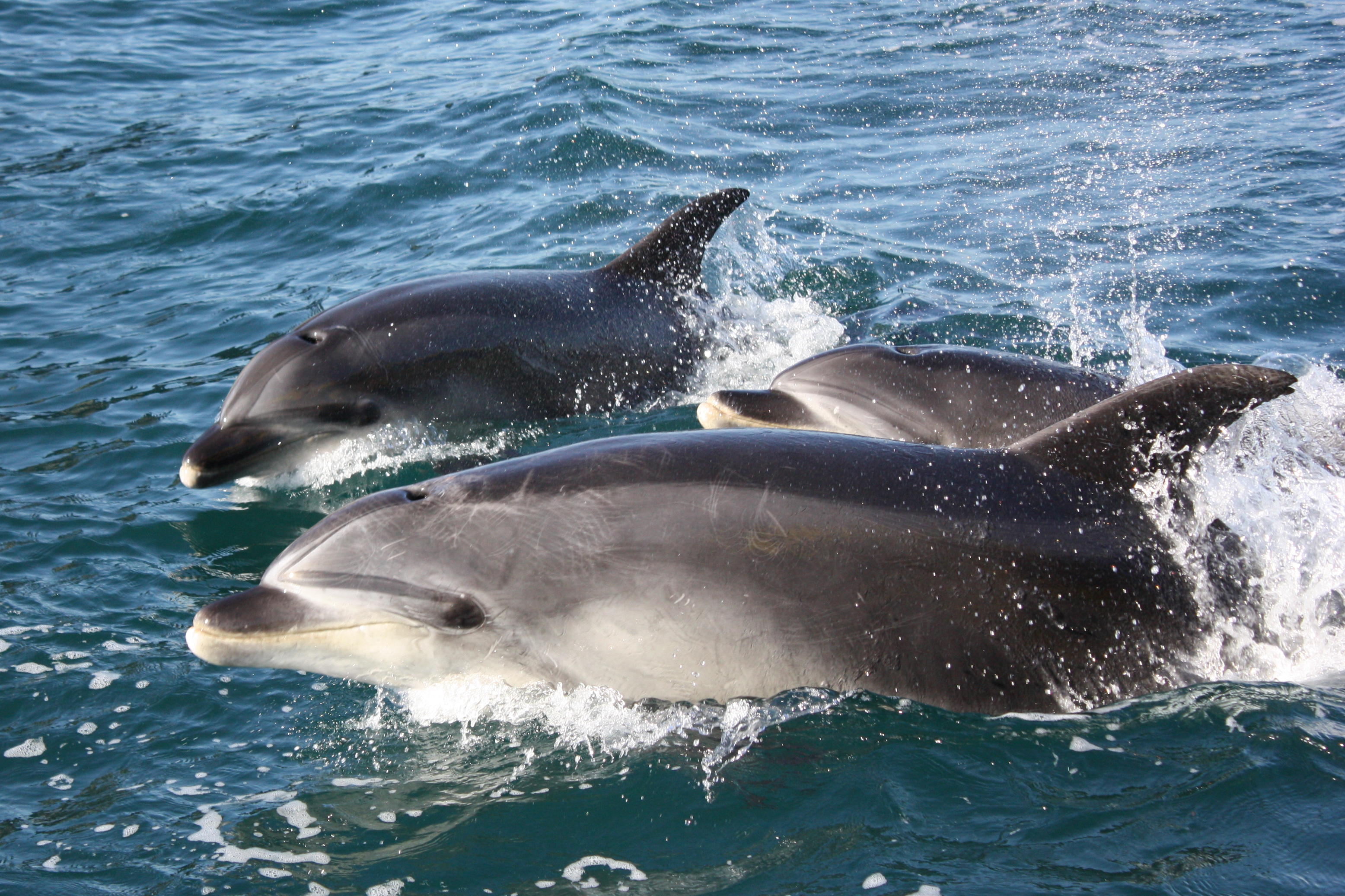
Bottlenose dolphin (Tursiops Truncatus)
Size: 1.9 - 3.9m & 250-650kg
Bottlenose dolphins are larger than common dolphins, with a relatively short beak and a hooked, prominent dorsal fin. They have dark or light grey backs, with paler underbellies. They live in pods of up to 60.
When they’re feeding close to the shore, bottlenose dolphins mostly eat bottom-dwelling fish and invertebrates. They will dive for around 3-4 minutes while they’re inshore but might dive for much longer periods offshore. Male bottlenose dolphins can live as long as 40-45 years, while females can live up to more than 50 years of age.

Common dolphin (Delphinus Delphis)
Size: 1.7 -2.4m & 70-110kgs
You can easily recognise common dolphins by their tall dorsal fin and pale side patches. They form large pods, sometimes including up to several thousand individuals. They'll also sometimes hang out with schools of pilot whales and other dolphin species. Common dolphins are abundant in the Bay of Islands, but we don't have a precise population estimate.
Common dolphins feed on a variety of prey including surface schooling fish, small mid-water fish and squid, often hunting together in schools. They can dive to depths of up to 280 metres in search of prey. They can dive for up to 8 minutes, but usually, spend between 10 seconds and 2 minutes underwater at a time.
Whales
Whales are very similar to dolphins in that they’re warm-blooded mammals and breathe air through their blowholes. They also have a thick layer of blubber to keep them warm, and like dolphins they sense their environment through echolocation.
There are two sub-orders of whales: baleen and toothed whales. Baleen whales are the largest animals on earth and feed on some of the smallest animals in the ocean. Their diet is made up of plankton and small fish that they suck in through the comb-like fringe on their upper jaw. Some well-known species of baleen whales include the blue whale and the humpback whale. Toothed whales feed on fish, squid, other whales and larger marine mammals.
Several of the species described below are actually members of the dolphin family, but are commonly known as whales.
Orca Whale (Orcinus Orca)
Size: Newborns grow to 2.1-2.5m & 180ks | Adults can grow to 5.5-9.8m & 2.6-9 tons!
Orca, sometimes known as killer whales, are actually the largest members of the dolphin family. They have black backs and white patterns on their stomachs. Males have a large triangular dorsal fin, while females have a shorter curved fin. Orca live in small family groups or pods of up to 30 individuals, although pods tend to be smaller in New Zealand waters.
The language of orca is one of the most complex animal languages. They make high-pitched whistles, pulsed calls, low-frequency pops and they can make clapping sounds using their jaws. Every pod has their own language with members of the same pod making the same calls. They also communicate through touch and other gestures like head-butting and slapping their fins together.
Adult orca have an extremely diverse diet including all kinds of fish, sharks, rays, squid, birds and turtles. They are the only known cetaceans that regularly prey upon other marine mammals – when they arrive in the Bay the dolphins usually skip town for the day! Orca hunt cooperatively and are even known to intentionally ‘strand’ themselves on beaches in order to catch seals. There is no record of orca attacking humans.
Bryde's Whale (Balaenoptera Brydei)
Size: 4-8m & 1.5-3.8 ton
Bryde’s whales have a bluish-gray body with white on the underside (see main image). They have very broad and short head with relatively large eyes. Females are slightly larger than males.
The Bryde’s (pronounced "broodus") whale has two narrow blowholes that can blow up to 4m high. It has no teeth but has two rows of baleen plates, which are similar to bristles, which it uses to filter and trap small fish like anchovy, herring and mackerel.
They’re usually found alone or in pairs, but will sometimes gather in pods of up to 30 at good feeding grounds. They can dive for 5 – 15 minutes at a time and will follow up a dive with a series of blows.
Long-finned pilot whale (Globicephala Melas)
The pilot whale, like the orca whale, is a member of the dolphin family, and is second only to the killer whale in size. Pilot whales have stocky bodies and a distinctive rounded head with a slight beak and up-curved mouth. They are usually dark grey or black in colour, and often have a saddle-like marking behind their dorsal fin, which is set forward on the back and sweeps back.
Pilot whales mainly feed on squid but will eat fish as well. A pilot whale has only 40 to 48 teeth, compared to 120 in many other dolphin species. This may indicate an evolutionary trend towards fewer teeth as a squid eater. Male long-finned pilot whales can live for about 45 years, while females can live for up to 60 years.
Pilot whales are very social and are often found in groups of 10 to 30, but some groups may be as big as 100 or more whales. They are quite active and will frequently approach boats.
False Killer Whale (Pseudorca Crassidens)
Size: 5-6m & 1.2-2.2 ton
Pseudorca or false killer whales are another member of the dolphin family. They look fairly similar to pilot whales, but are known as false killer whales because of the similarities in their skulls. To tell false killer whales from pilot whales, look for the smaller dorsal fin, a slender dark grey/black body with no white patches, and a pointed head.
Pseudorca are pelagic (open-ocean) dolphins, but we sometimes see them when they move closer to shore. They were first recorded in NZ waters in 1872. Today there are two main social ‘clusters’ in this area, totalling less than 200 animals. They are very social creatures, and will often travel in pods with bottlenose dolphins. However, they’ve also been known to feed on dolphins!
Pseudorca are most often seen around the north-eastern coastline of the North Island between December and May.
New Zealand Seals
There are around 33 species of seals worldwide, including fur seals, sea lions and common seals. Seals have thick fur and a layer of blubber to keep them warm in cold water. Luckily for them, the water in the Bay of Islands is quite warm! Their unique, wavy whiskers help them to detect prey in dark muddy water up to 180 metres (600 feet) away. They’re carnivorous mammals, usually feeding on fish, squid, shellfish or sea birds with leopard seals eating other species of seals. They can dive for food up to 914 metres (3,000 feet) deep.
Seals are very good swimmers and they’re are also very agile on rocky shores, with the ability to haul themselves onto high rocks. They can spend up to 10 days at sea on a feeding frenzy and come ashore (haul-out) to rest, feed their young, mate, give birth or moult.
Their natural instinct is to protect themselves, their pups and their surroundings and they can become aggressive by biting and attacking if humans get too close. It’s always best to stay away from them, watching and observing from a distance.
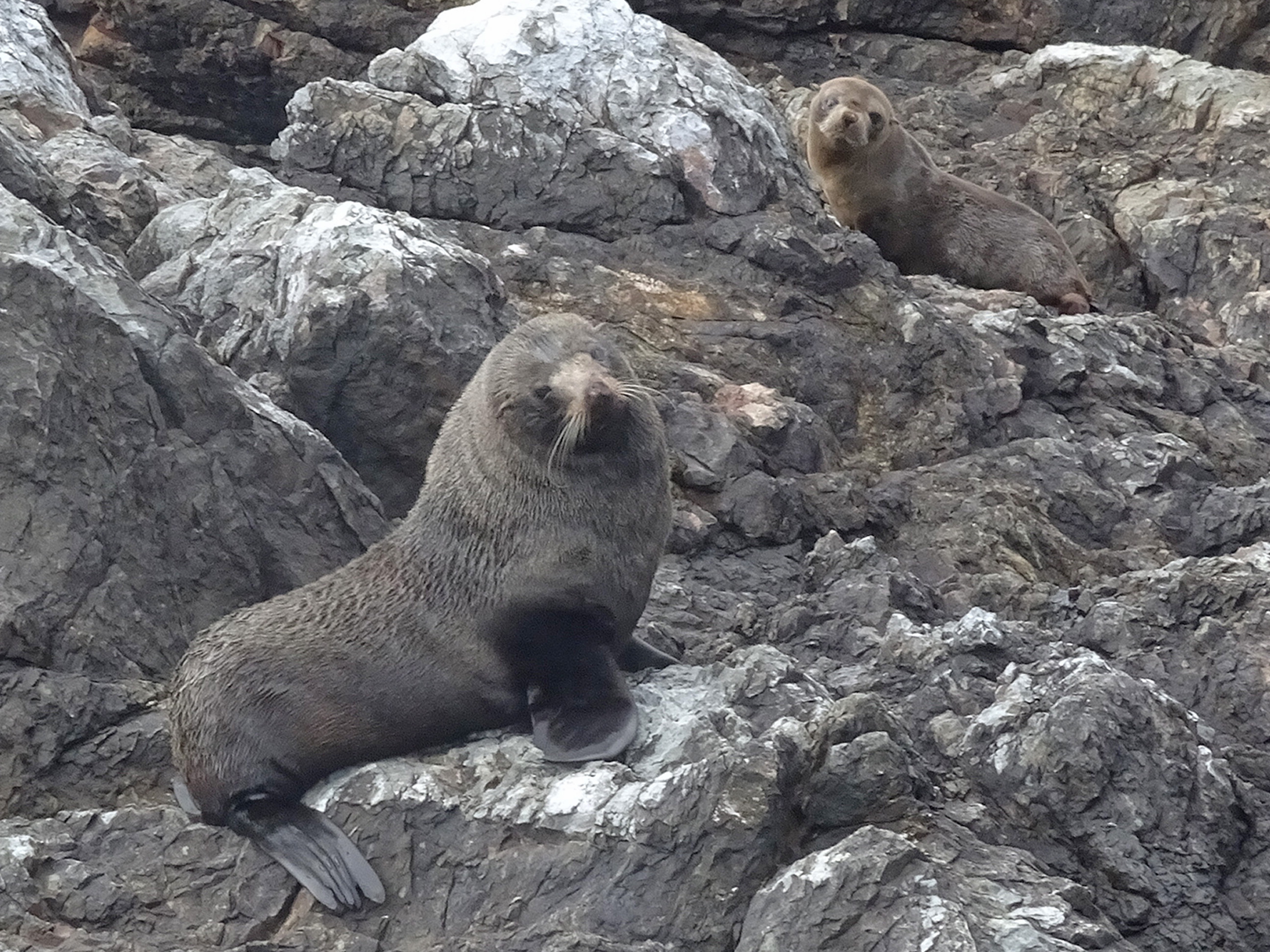
New Zealand fur seal (Arctocephalus Forsteri / Kekeno)
Size: 1.5-2.5m & 30-50kg females, 90-150kg males
The New Zealand fur seal, or ‘kekeno’ in Māori, is the most common seal in New Zealand waters. They live in the Bay of Islands and around the rest of our coastline and have also been spotted in some parts of Australia.
Kekeno have pointy noses with pale whiskers, small earflaps and a dark grey-brown coat. Their hind flippers can rotate forward and they are very agile at sea and on rocks.
Kekeno are excellent swimmers. They feed mainly on squid and small mid-water fish, but will also eat larger species such as eels, barracuda and hoki. New Zealand fur seals have been recorded diving deeper and for longer than any other species of fur seal. They mainly feed at night, when prey is closer to the surface, which is why you’ll usually see them resting during the day.
Fur seals go back to the same beach to breed every year. Females mate 6-8 days after giving birth. Delayed implantation of the egg allows them to give birth and mate during the same trip to shore, but not give birth again until the next year. Males fight fiercely for territory at the breeding grounds and mate with multiple females.
New Zealand Birds
With its unspoiled environment of native bush and pristine waters, the Bay of Islands provides a safe habitat for many native bird species. Predator-free islands such as Motukawanui Island and Moturua Island are home to a number of rare and endangered species. The Department of Conservation (DOC) and Project Island Song are working to increase the numbers of native birdlife.
Here are some of New Zealand’s common and more unusual native birds that you could see in the Bay of Islands area, both at sea and on land.
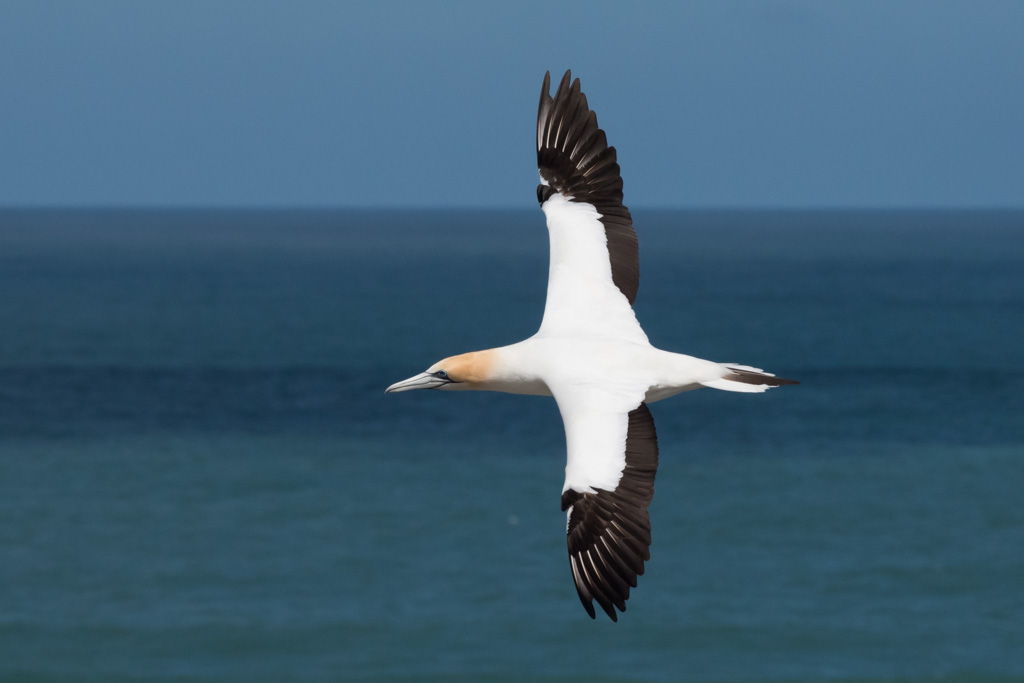
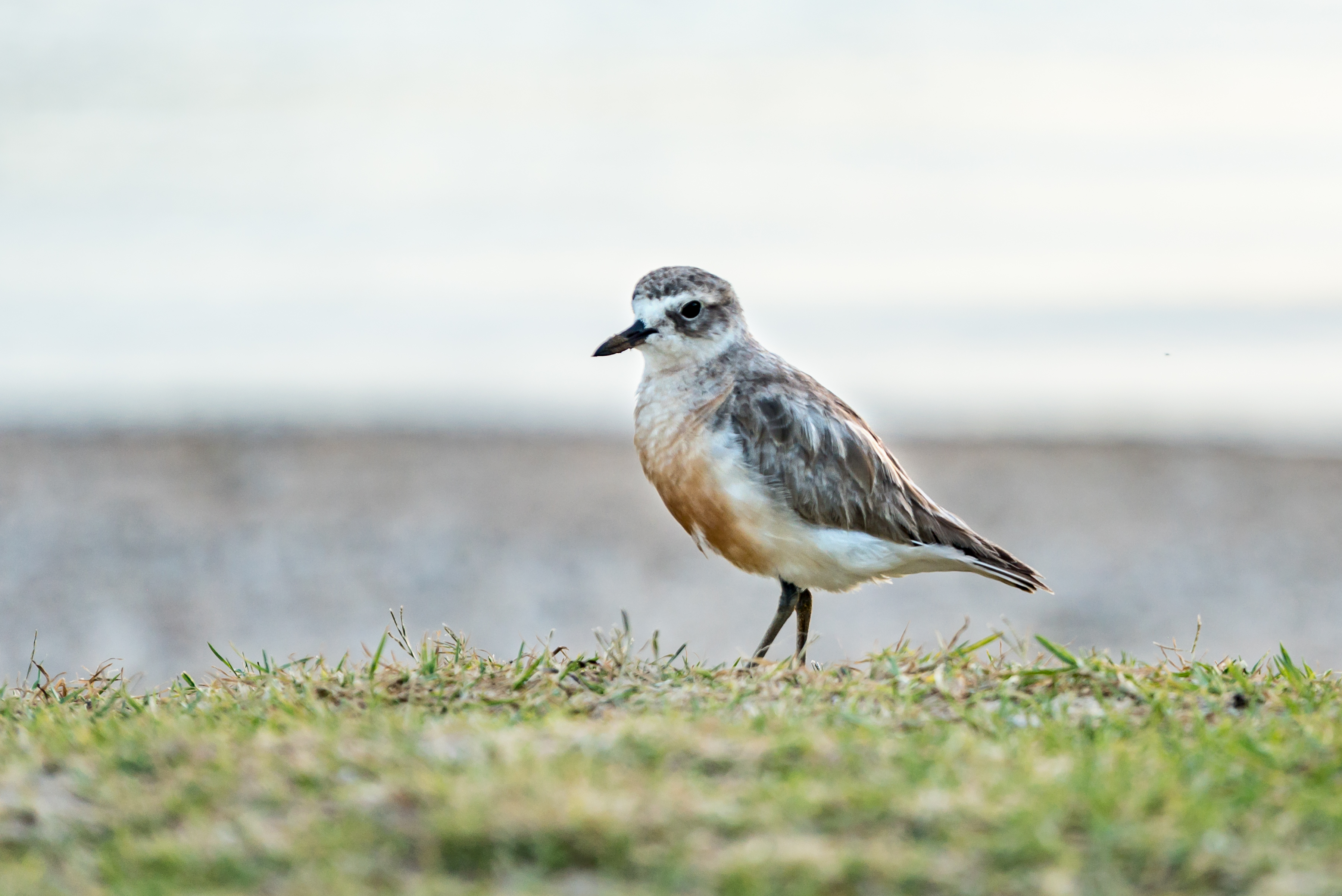
Sea and shore birds
Keep an eye out during your cruise for the world’s smallest penguin, the little blue penguin or kororā – you’ll often see them bobbing around in the waves. Recognisable by their slate-blue plumage and white bellies, they can move quickly underwater thanks to their paddle-like flippers.
Up above the waves you might spot a grey-faced petrel (oi) or a white and yellow Australasian gannet (takapu), diving for fish. Also known as the North Island muttonbird, petrels are a protected species and can often be spotted around Urupukapuka Island and Moturua Island. Gannets are impressive hunters – they fly high over the sea, scanning for fish from up to 30 metres above the surface, before making spectacular dives. They fold their wings to speed up, often travelling faster than 100 kilometres per hour when they hit the water.
In trees along the shoreline you could see a black shag (kawau), spreading its wings out to dry after a dive. The native brown teal (pāteke) lives in coastal and wetland areas – once relatively common, there are now only 2,000 of these small brown ducks with white eye rings left in New Zealand. In 2012 six pairs of pāteke were released onto Urupukapuka Island in the Bay of Islands thanks to work by Project Island Song.
There are two species of oystercatcher native to New Zealand: the South Island Pied Oystercatcher and Variable Oystercatcher (torea/toreapango). They can often be found together on beaches, probing the sand for molluscs and worms. The pied oystercatcher is more common and is black with a white belly, red bill and legs. Variable oystercatcher may be black and white or pure black and are slightly larger.
The tiny New Zealand dotterel (tūturiwhatu) is another beach dweller. Dotterels are well camouflaged, being sandy brown with white underbellies, so you’re likely to hear its high-pitched ‘chip, chip’ call before you see one. Due to predators and habitat loss there are only about 1700 dotterels left in New Zealand, but they may be found on secluded beaches around the Bay of Islands.
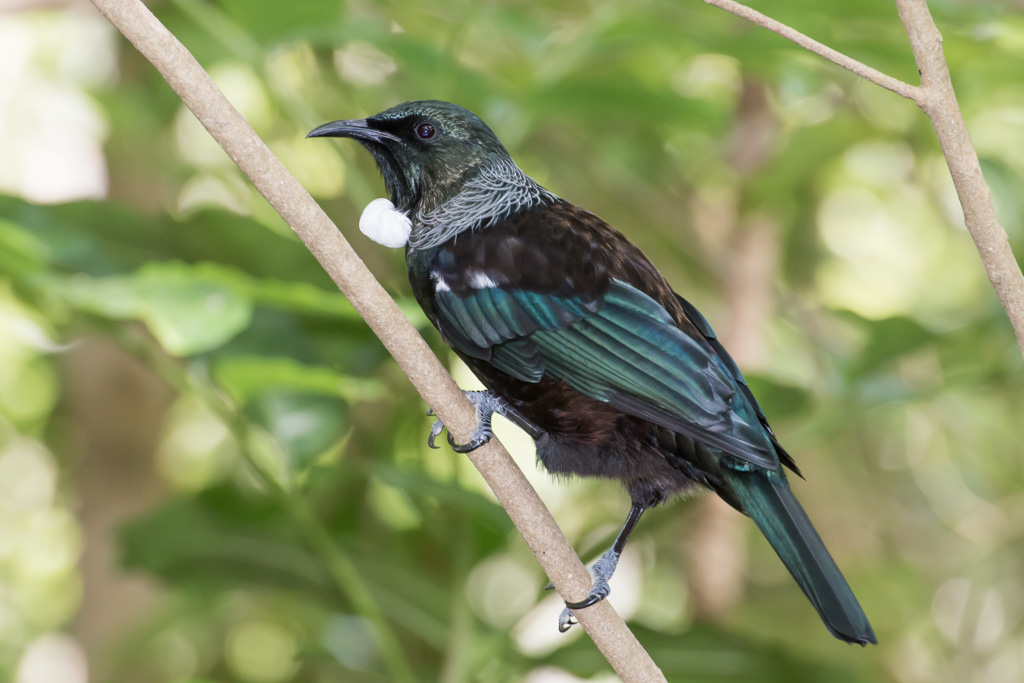
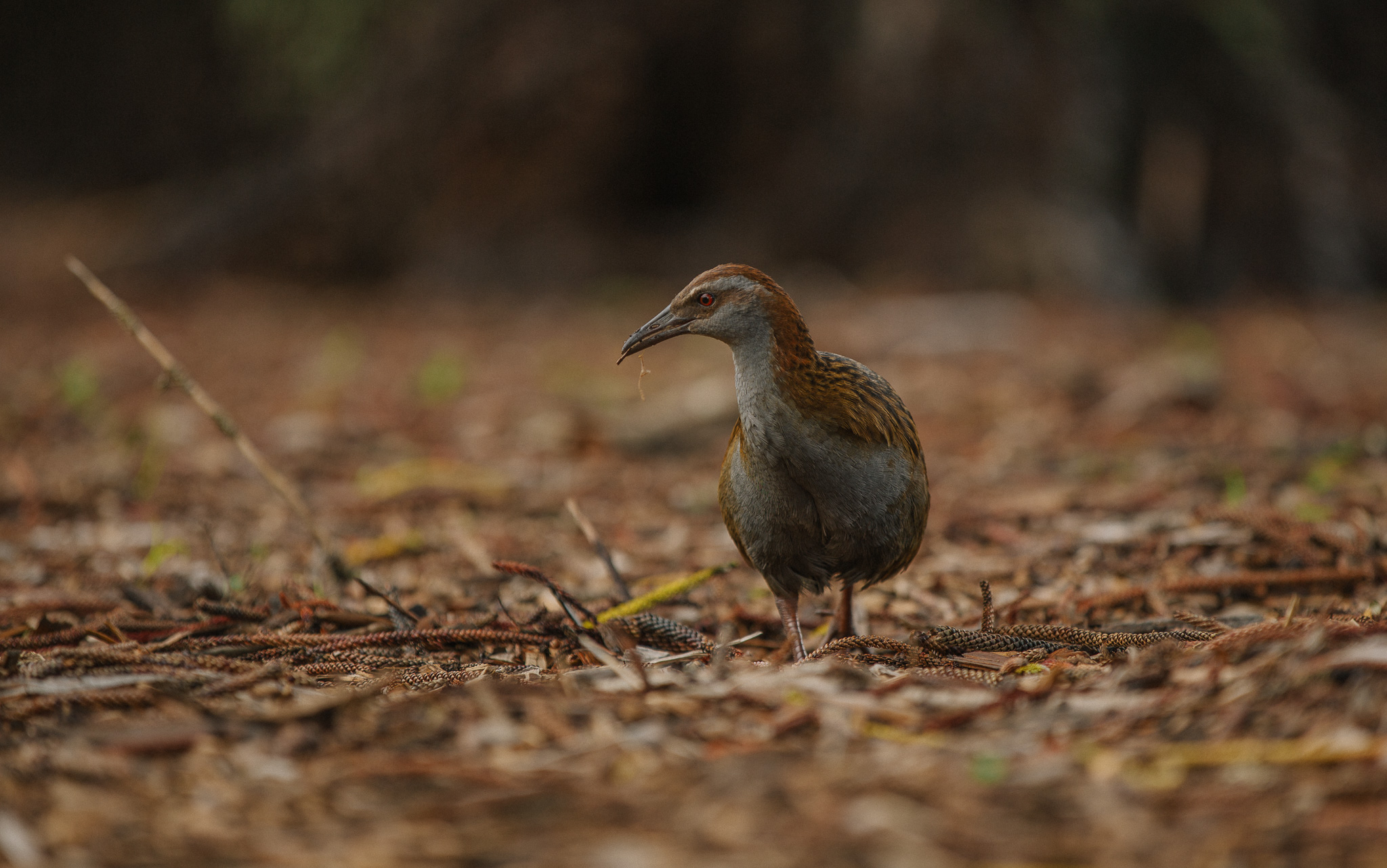
Land based birds
When you’re out and about in the Bay of Islands, especially if you’re heading into the bush, listen out for the call of our many native birds. There’s a good chance you’ll hear the tūī – an attractive bird with dark blue-green iridescent plumage and white tufts under its chin. These nectar-eaters are common around New Zealand and have a diverse vocal range, singing beautiful melodies as well as squawks and clicks.
The North Island robin (toutouwai) is about the size of a sparrow, with dark grey feathers and a paler breast. These trusting birds are extremely vulnerable to predators and at one point were extinct in the Bay of Islands region. In 1986 a group of 16 toutouwai were reintroduced onto Moturua Island and there are now about 30 on the island.
A completely unique animal, the kiwi is an endangered, flightless nocturnal bird – perhaps a strange choice for New Zealand’s national icon! Kiwi are the only birds in the world with nostrils and whiskers at the end of their beaks, which help them to sniff out worms, insects and fruit. The Northland brown kiwi has spiky reddish-brown plumage. It once lived all over Northland, but is now only found in pockets thanks to deforestation and predators. In the Bay of Islands kiwi may be found on Moturua and Motuarohia Islands and around Kerikeri. They are shy creatures and not easily seen.
The cheeky and curious weka is a flightless member of the rail family and has brown plumage. Weka are scavengers and will eat anything from insects and plants to lizards, rodents, food scraps and the eggs of other birds.
Also known as the purple swamphen, pukeko prefer swampy ground but can be found in a range of environments. They have distinctive dark blue plumage with a red beak and legs, and white feathers under their tail. With their long legs they are well-suited to wading, running and swimming; although they can fly they are not very good at it.




